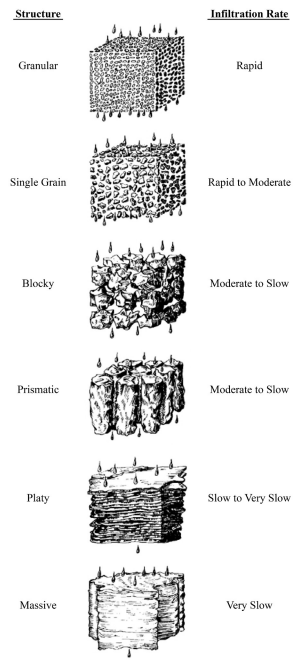Click here to view a video that explains soil water holding capacity.
The water-holding capacity determines the amount of water that is available for plants, and which can be stored to provide for the water requirement of plants in the periods between rains and irrigation applications.
The soil infiltration rate plays an important role in the amount of water that is available to the plant.
Soil infiltration rate is the rate at which water can infiltrate the soil.
There is a considerable variation in the capacity of soils to store water and release it for plant use. In some clay soils, water holding capacity may be as high as 25mm water per 100mm soil, whereas it can be as low as 6mm per 100mm soil in sandy soils.
Although clay soils can store more water than sandy soils, the water may not be available to the plants during periods of fast growth. Sandy soils retain less moisture, but the water is more readily available to plants.
The water absorption capacity of soil must be taken into consideration always when preparing land for planting or planning an irrigation system.
